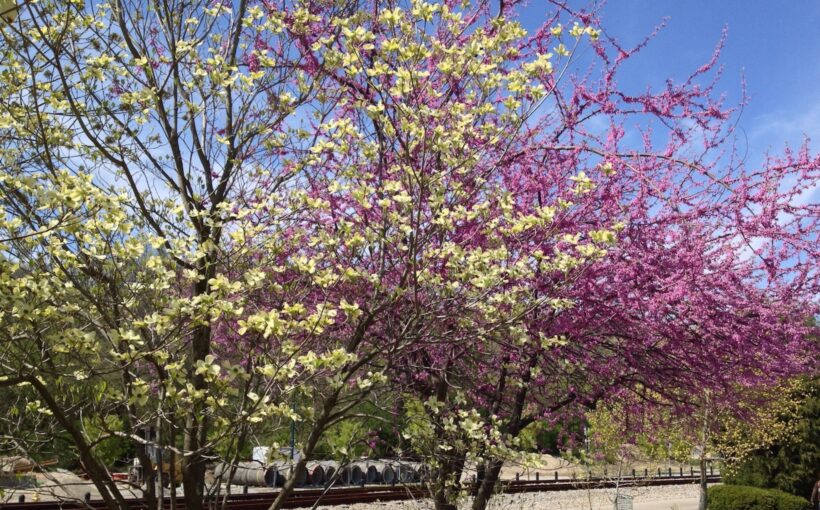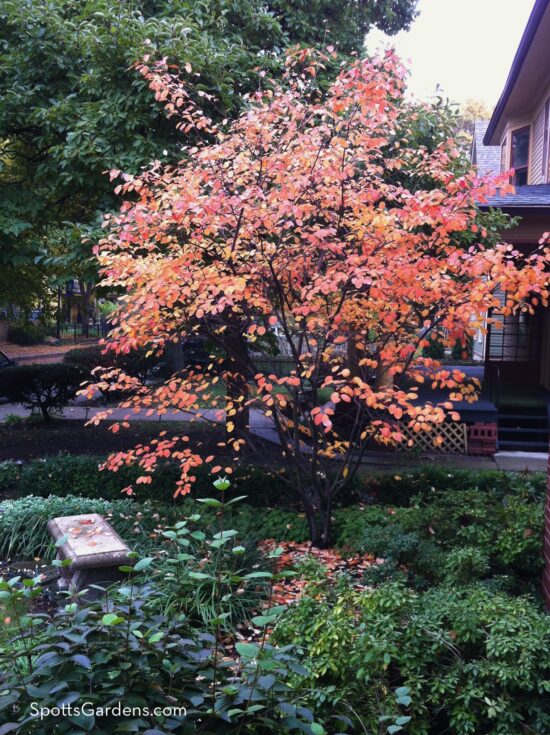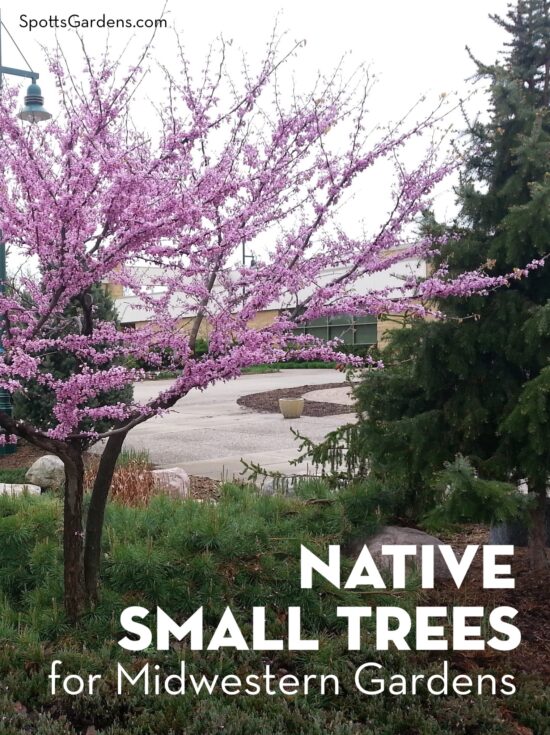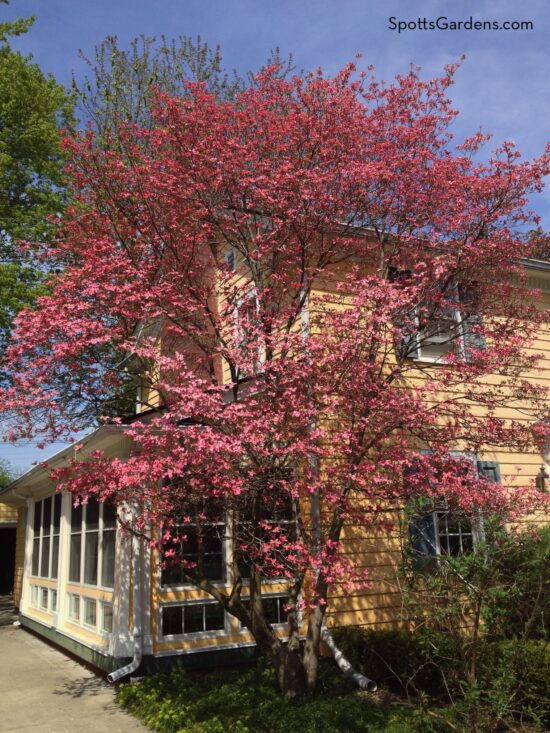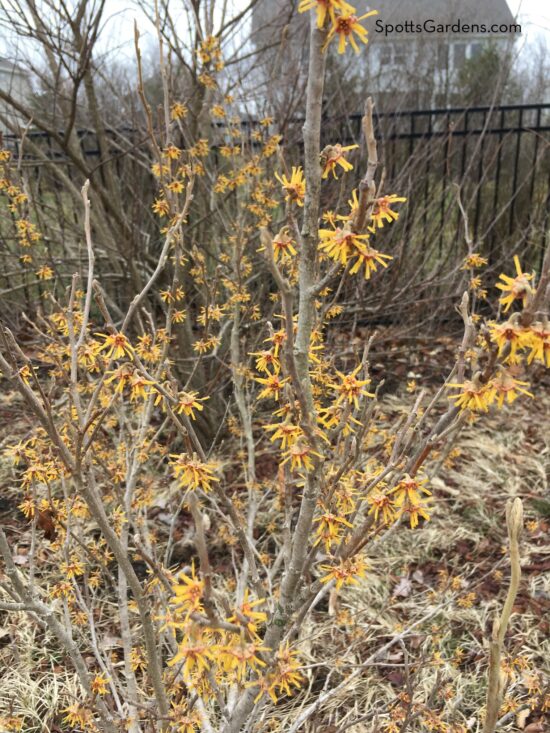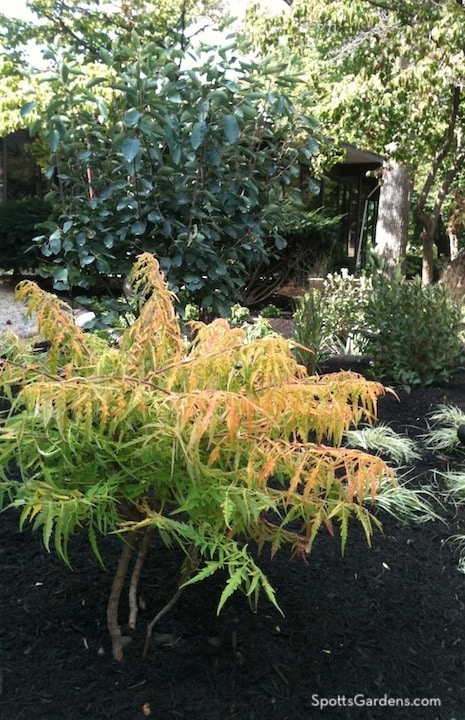Small, native trees are an excellent addition to any size garden. While it may not cast quite as much shade as an oak tree, a small tree can shade a patio or window, provide a focal point in the garden, and serve as habitat for birds and other wildlife. We also use them to give yards a sense of enclosure and screen less-than-stellar views.
The line between a large shrub and a small tree is pretty fuzzy. For us, a small tree is one with a single trunk or a few trunks that stays under about 40′ tall. Here are some of our favorites native choices for central Indiana landscapes.
Serviceberry (Amelanchier spp)
Depending on where you live, you might know these excellent native trees as serviceberries, Juneberries, Saskatoon berries, shadbush, or shadblow. Regardless, members of the Amelanchier genus are multi-season pleasers, with spring flowers for pollinators and delicious summer berries (assuming you can beat the birds to them). They’re native to the edge of the woodlands, so they generally can handle full sun to part shade.
Our favorite is the apple serviceberry, Amelanchier x grandiflora, a hybrid of two of our native serviceberries. While single-trunked specimens are available, we much prefer ones with three or four trunks. These lovely native trees are particularly good as specimens. They also provide shade light enough that you can easily grow part-shade plants under them. Popular cultivars include ‘Autumn Brilliance,’ ‘Robin Hill,’ and ‘Princess Diana.’
Downy serviceberry (A. arborea) grows to about 15′ to 20′ tall; Allegheny serviceberry (A. laevis) get about the same size. Both are flexible in terms of soil, pretty enough to be used as focal points, and equally at home as part of shrub borders or mass plantings. Amelanchier is a keystone genus, supporting up to 92 different species of butterfly and moth caterpillars.
Redbud (Cercis canadensis)
The purple-pink buds of the redbud tree are a sure sign of spring in Indiana. Our Cercis canadensis usually blooms in March or early April in central Indiana. After blooming, this native tree develops heart-shaped leaves and bean-shaped pods. Plant it in full sun or part shade on average soil; it can also handle dryish areas. Avoid extremely hot sun. It’s excellent as an understory tree as well as a focal point.
We’re partial to the straight species and its green leaves. But many cultivars are bred for colored leaves; check out ‘Forest Pansy’ for dark leaves and ‘The Rising Sun’ for golden ones. ‘Appalachian Red’ stays a bit smaller than the species and sports a more intensely red bloom. Cercis canadensis forma alba blooms white instead of pink.
Redbuds in the city have a relatively short lifespan, usually less than 30 years (although they may live up to 50 to 75 years in the wild). We recommend planting a slower-growing canopy tree at the same time as you plant your redbud. By the time the redbud is ready to come down, the canopy tree will be ready to take over shading duties.
Redbud is an important early food for pollinators and a larval host plant for Henry’s elfin butterfly.
Dogwood (Cornus spp.)
Thanks to its flat, white flowers and lovely spreading form, graceful flowering dogwood (Cornus florida) is a popular native tree for home landscaping. Once common in our open-canopied woodlands, its numbers have been declining in recent decades. Flowering dogwood is at its best in filtered or part shade and rich soils; avoid planting it in full sun. The straight species grows to about 15′ to 30′ tall and wide, and produces red fruits for wildlife.
Unfortunately, flowering dogwood is vulnerable to dogwood anthracnose. This fungal disease can kill the tree, and it’s been found throughout Indiana. So if you want a dogwood tree, look for an anthracnose-resistant variety, like ‘Appalachian Spring’ or ‘Jean’s Appalachian Snow.’ Another option is one of the anthracnose-resistant hybrids out of Rutgers University; the ‘Stellar series’ crosses C. florida and C. kousa.
Or consider the magnificent pagoda dogwood, Cornus alternifolia. Its distinctive horizontal branches create a big impact in part shade gardens. You can grow it as a shrub, but we love it trained into a tree form. Make sure you have enough room; pagoda dogwood gets 12′ to 25′ tall and 20′ to 30′ wide.
Cornus is another keystone genus, with species supporting up to 98 different caterpillar species.
Witch Hazel (Hamamelis virginiana)
If you want to extend the blooming season in your garden, check out common witch hazel. While most witch hazels bloom in late winter or early spring, our Hamamelis virginiana blooms between October and December. The flowers look like crinkled yellow ribbons and have a delicious, spicy fragrance.
Common witch hazel can be treated as a suckering shrub, but we like it shaped into a multi-trunked tree form. It grows to about 15′ to 20′ tall and wide. Plant in full sun or part shade in average soil. We find it works well in rain gardens, although it’s best used on the slopes since it doesn’t like regular innundation. Deer usually ignore it.
Tiger Eye Sumac (Rhus typhina ‘Tiger Eyes’)
And now for a really small tree. The petite Tiger Eye sumac (Rhus typhina ‘Tiger Eyes’) grows to just 3′ to 6′ tall and wide, but with a definite tree form. It’s perfect as a focal point in a small garden, mixed border, or native plant garden. Plant it in full sun to part shade in average to dry soil. It tolerates both urban conditions and nearby black walnuts well.
‘Tiger Eyes’ sports terrific color. The finely-cut foliage changes each season, settling into a bright yellow for most of the summer. In fall, it bursts into fiery red and orange. ‘Tiger Eyes’ is particularly great planted in front of a solid, dark background to make the most of its brilliant color.
This little native tree is a great wildlife plant too. The fruiting clusters that emerge in summer look like fuzzy cones. They darken to red and persist through the winter, providing a good food source.
‘Tiger Eyes’ is a cultivar of staghorn sumac (Rhus typhina). While an excellent plant for erosion control and rewilding, we avoid using the straight species in gardens because of its aggressive suckering. ‘Tiger Eyes’ is better behaved, but it does send out suckers that turn into new trees. Plan to prune off suckers if you don’t want the plant to spread at all.
Let’s Get Planting!
We can help you choose the best native tree for your yard! Contact us today to schedule a garden visit.
